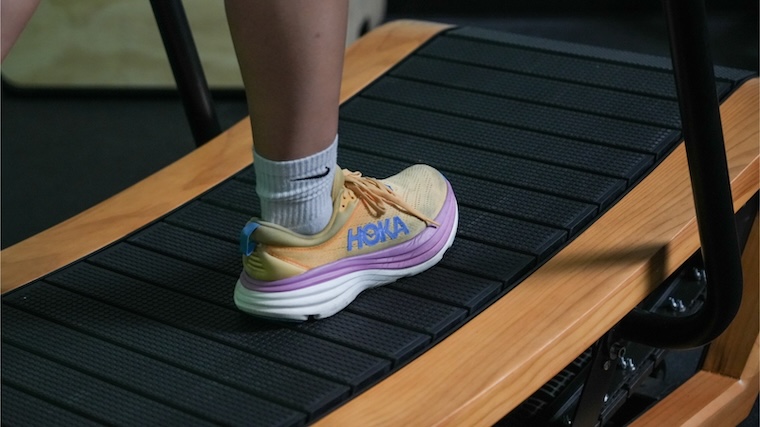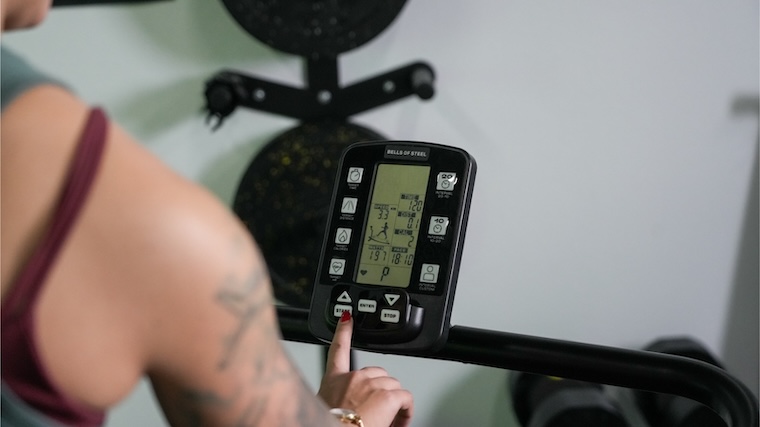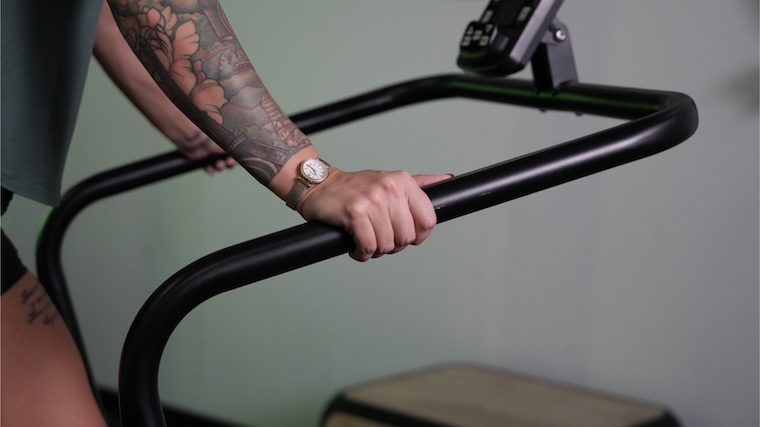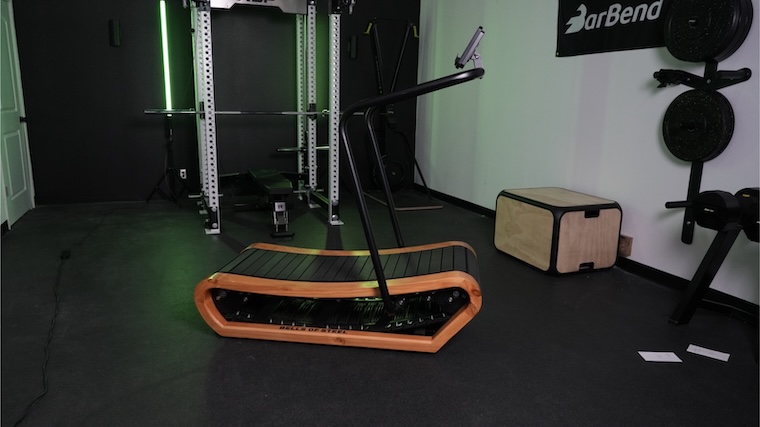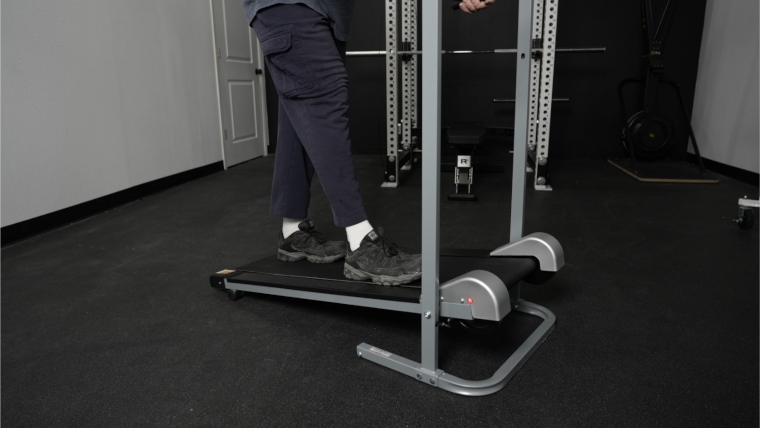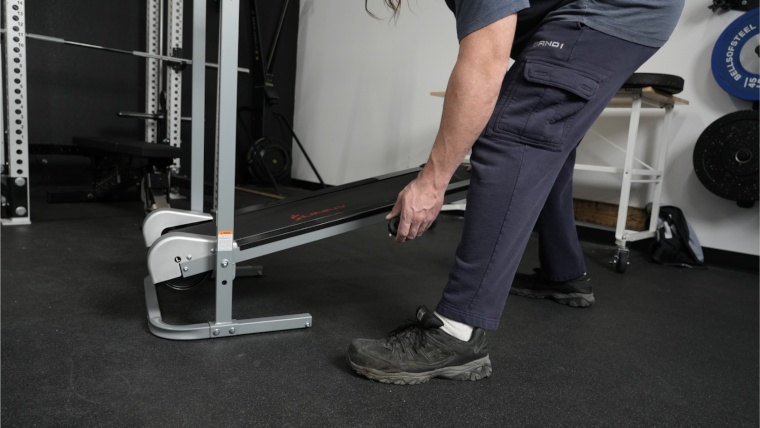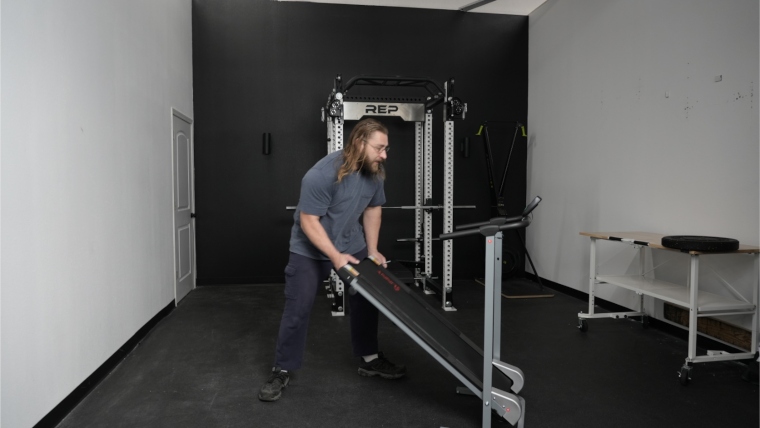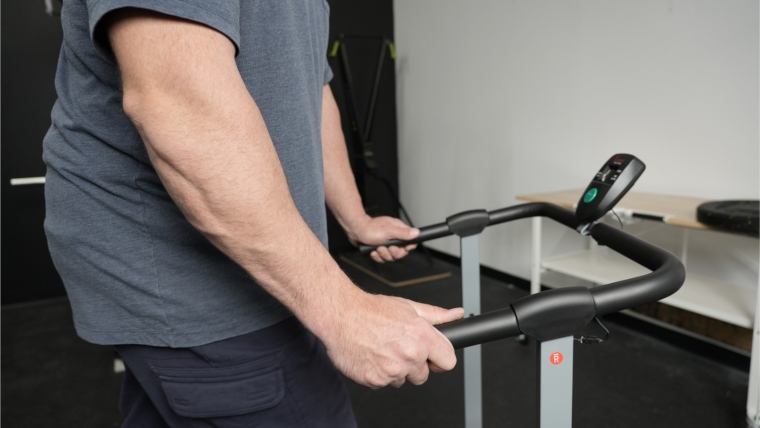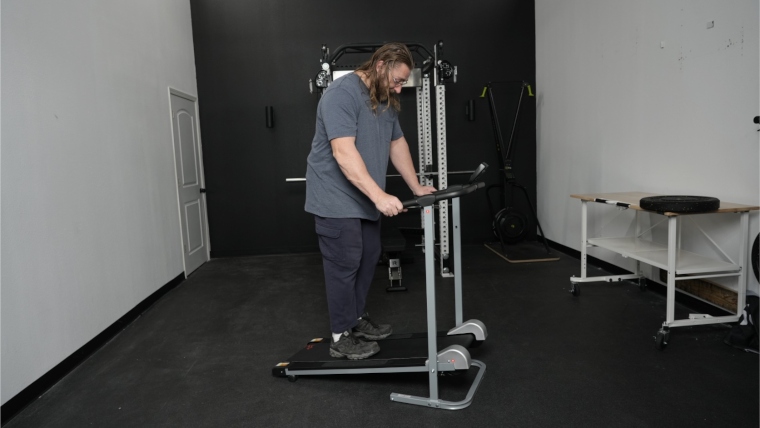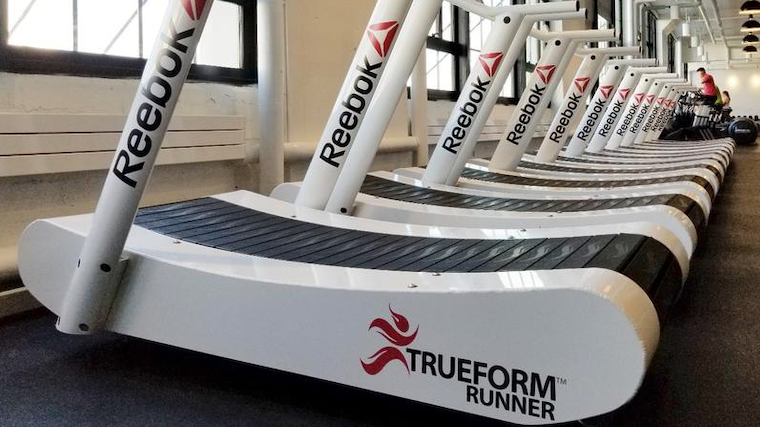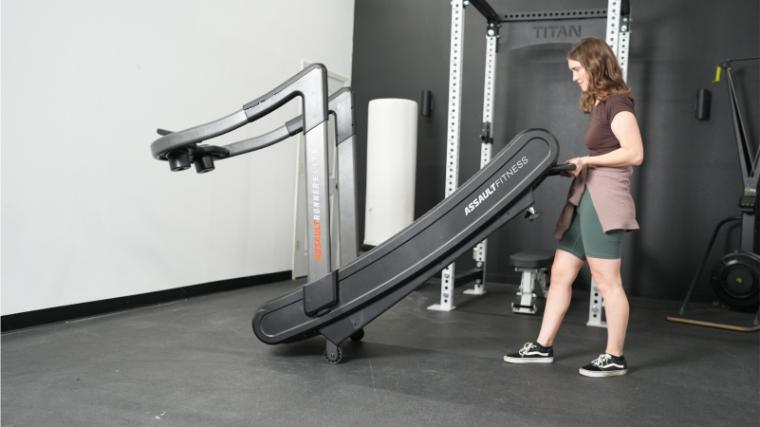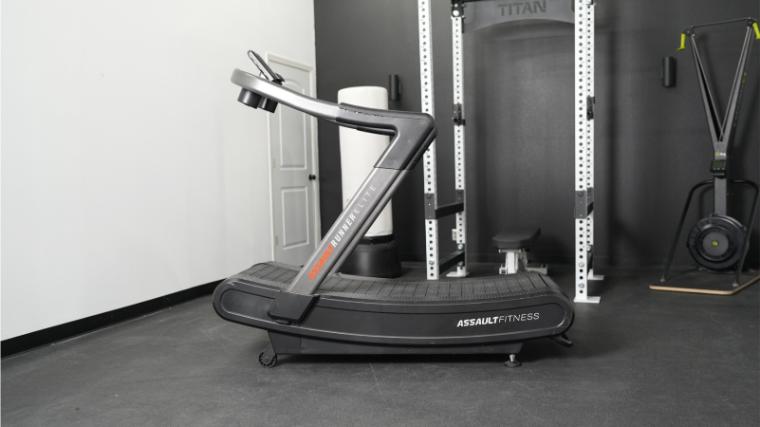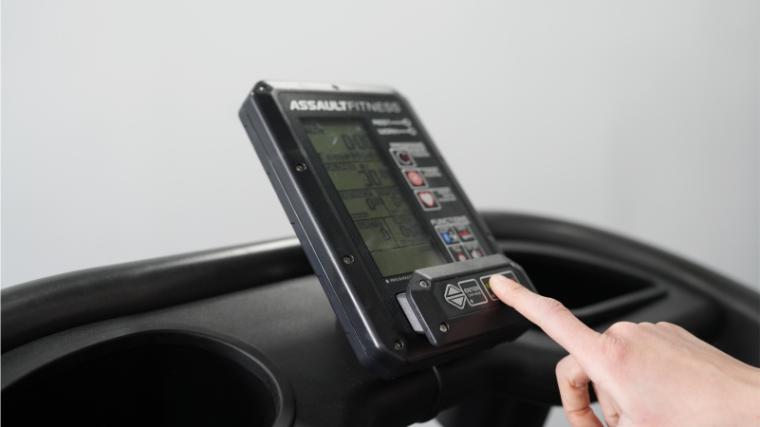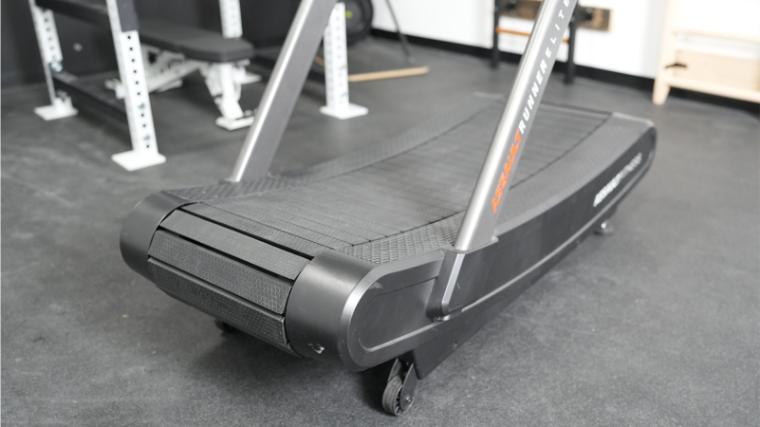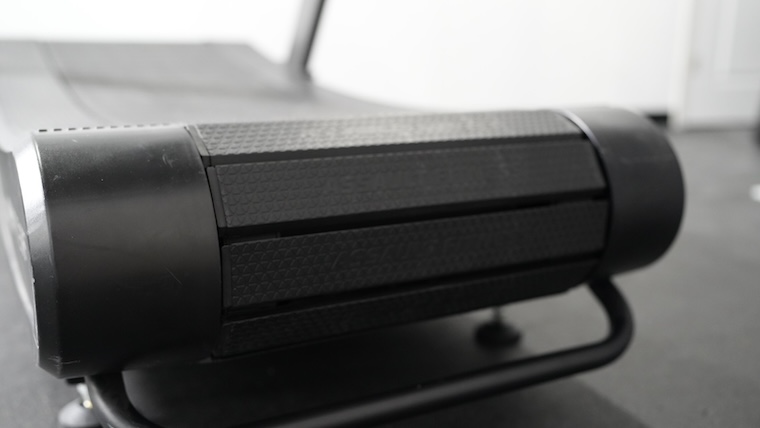Pounding out miles on one of the best treadmills can be torturous enough — and when you take away the motor, it requires a whole other caliber of mental toughness. Manual treadmills are exactly what they sound like: non-motorized treadmills powered by the user. Sounds difficult? It is. They’re better for advanced exercisers than those just articulating their fitness goals, but they also offer distinct perks, including a pace and gait that more closely resembles overground running and the ability to reach higher workout intensities at lower speeds. (1)
If you’re willing to put in the work, adding a manual treadmill to your home gym can help you power into a higher level of personal fitness. Our team of expert testers has hopped on dozens of different treadmills and carefully selected the five best manual treadmills we know can help you get the job done — because without a motor, they sure aren’t going to run themselves.
The Best Manual Treadmills of 2025
- Best Overall Manual Treadmill: Grit Fitness Tru Grit Runner
- Best Budget Manual Treadmill: Bells of Steel Wooden Residential Treadmill
- Best Manual Treadmill for Walking: Sunny Health & Fitness SF-T1407M Manual Walking Treadmill
- Best Curved Manual Treadmill: TrueForm Runner
- Best Manual Treadmill for Running: AssaultRunner Pro
Best Overall Manual Treadmill: Grit Fitness Tru Grit Runner
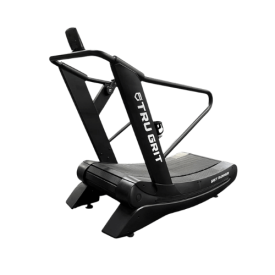
This self-powered treadmill stands out with six levels of resistance — the highest of which works to replicate a sled push. The frame is forged from commercial-grade steel and aluminum, and the battery-powered LCD display tracks time, distance, calories, speed, and tempo.
Specs
- Price: $2,495.99
- User Weight Capacity: 330lbs
- Product Weight: 328lbs
- Product Dimensions: 79” L x 35” W x 60” H
- Warranty: Lifetime frame, 2-year belt, 2-year tread, 2-year monitor
Best Budget Manual Treadmill: Bells of Steel Wooden Residential Treadmill
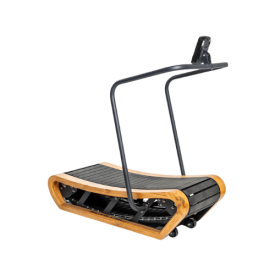
This beefy, self-powered treadmill has an 8.4-degree curve that can help promote proper running form and support sweat-drenched HIIT sprints. It also has a trim 47-inch by 17.3-inch running deck, 4-inch wide footrails, and nylon slats in the belt that can potentially help reduce the impact on your joints.
Specs
- Price: $1,999.99
- User Weight Capacity: 396lbs
- Product Weight: 209.4lbs
- Product Dimensions: 55.75” L x 31.5” W x 61” H
- Warranty: 5-year frame, 2-year parts
Best Manual Treadmill for Walking: Sunny Health & Fitness SF-T1407M Manual Walking Treadmill
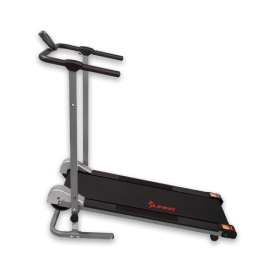
This manual treadmill can be a great selection for walking enthusiasts given its minimalist design and highly-portable makeup. Additionally, the SF-T1407M features a constant incline of 13.5 percent, which can be helpful when trying to challenge yourself throughout your daily step goals.
Specs
- Price: $199.99
- User Weight Capacity: 220lbs
- Product Weight: 46.7lbs
- Product Dimensions: 49” L x 23” W X 50” H
- Warranty: 3-year structural frame, 180-days parts and components
Best Curved Manual Treadmill: TrueForm Runner
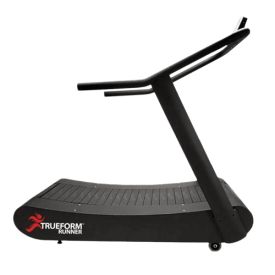
The top-of-the-line TrueForm Runner is a non-motorized treadmill that works to instill proper running form with a curved tread designed to better mimic outdoor terrain. It's the most expensive of its kind, but its powder coated steel frame is designed to last well into the foreseeable future.
Specs
- Price: $6,895
- User Weight Capacity: 700lbs (walking), 450lbs (running)
- Product Weight: 350lbs
- Product Dimensions: 64” L x 36” W x 63” H
- Warranty: 20-year frame, 5-year tread mechanism, 3-year display, 2-year labor
Best Manual Treadmill for Running: AssaultRunner Pro
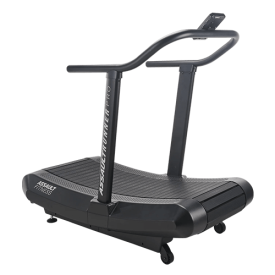
The AssaultRunner Pro is a durable, motorless treadmill that can be great for athletes wanting full control of their training intensity. The durable frame boasts a 350-pound weight capacity, and the included display console is easy to read, albeit simpler in nature.
Specs
- Price: $2,999
- User Weight Capacity: 350lbs
- Product Weight: 280lbs
- Product Dimensions: 69.7” L x 33.1” W x 64” H
- Warranty: 5-year frame, 3-year moving parts
How We Tested and Chose the Best Manual Treadmills
If the BarBend team knows one thing, it’s workout equipment. The group is chock-full of competitive athletes, certified personal trainers, and lifelong fitness enthusiasts who’ve had the opportunity to walk, jog, and run on more than 40 different treadmills. To arrive at our top picks, we tapped their expertise and adhered to the BarBend equipment testing methodology. We scored each machine on a scale of 1 (lowest) to 5 (highest) across multiple categories including the following:
- Value: It isn’t just about the price tag; it’s about what you’re getting for that amount. Manual treadmill prices range from a couple hundred dollars to several thousand, so we judged each based on what they offer in relation to the dollars spent.
- Durability: It takes a lot of force to manually power a treadmill, so we carefully eyed the stability, durability, and construction of these machines, including taking a look at the warranties. When it comes to warranties, our expert reviewer, Amanda Capritto, recommends “looking for 10 years on the frame, at least 2 years on parts, and at least 1 year for labor.”
- Conveniences: Manual treads tend not to have many of the bells and whistles motorized treadmills do (think: fans, water bottle holders, built-in displays, device shelves). We kept the industry standard in mind when rating these based on their inclusion.
Benefits of Manual Treadmills
With manual treadmills, you get all the usual benefits of treadmills plus some extras. Amanda Capritto, our expert reviewer, is a big fan. “I love how [it] encourages me to maintain good running form and feels more like running outdoors, but brings all the benefits of running indoors,” she says. It also poses a new challenge: “You have to work at maintaining your pace; it won’t set the pace for you,” she says. It’s not just her opinion, either — these benefits are backed by research.
- Better Replicates Outdoor Running: A 2017 study published in Frontiers in Physiology found that, compared to a regular treadmill, running on a manual treadmill was more similar to overground (i.e. outdoor) running in terms of pacing and gait (1).
- Can Help Refine Running Form: A 2018 study found that running on a curved, non-motorized treadmill had a significant effect on people’s gait. Specifically, runners had a shorter stride length, less gait asymmetry, and reduced stride angle, which are associated with more efficient running, reduced injury risk, and less impact upon landing. (4)
- Potentially Burn More Calories: Research shows that walking or running on a manual treadmill results in higher overall exertion compared to doing so on one that’s motorized, and this seems to result in greater calorie burn while working out. (5)(6) Additionally, Dr. Karena Wu, PT, DPT, OCS, COMT, CSCS, CKTP, CPI, FAAOMPT, adds, “Treadmills allow the most for calorie burn and muscle strengthening because of the propulsion required on the belt and the impact forces that occur with each step.”
- No Electricity Required: Electric, motorized treadmills require a well-placed outlet supplying plenty of power, which can add up on your electric bill. With manual treadmills, there’s also no need for a nearby outlet or unsightly extension cords. As such, it’s ideal for home use, as you can set it up anywhere.
What Is a Manual Treadmill?
In a basic definition, a “manual treadmill” is a treadmill silhouette that doesn’t use an internal treadmill motor to power the running belt. Rather, the belt rotates on its drivetrain through the power put down by the athlete, themselves. As a result, manual treadmills can be excellent for generating high-intensity training scenarios at lower speeds while also better resembling the movements and biomechanics of standard outdoor running. (1)
Types of Manual Treadmills
While you may have an idea of what a manual treadmill looks like, there are a variety of manual treadmill types to choose from. Below are a handful of popular silhouettes to keep your eyes out for when looking to purchase one for your own home gym.
Curved Manual Treadmills
The most common type of manual treadmill is a curved profile. Curved treadmills emphasize the ergonomics of your running stride and help you move the belt in a comfortable, natural manner with each strike and push-off.
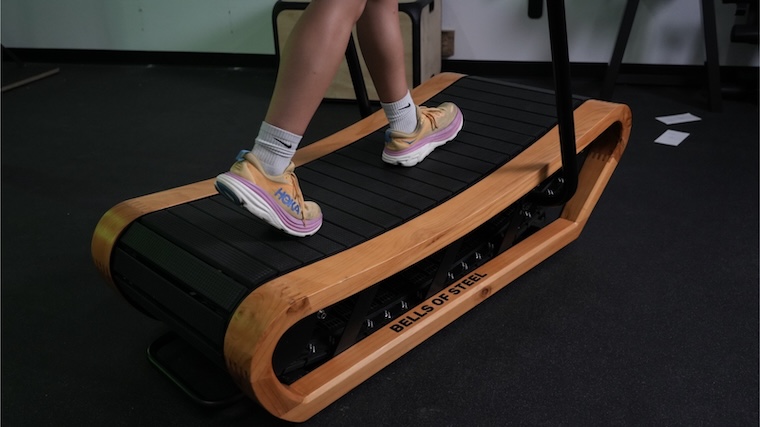
When looking at the best curved treadmills, you should understand that there is a learning curve involved. You’ll need to take it easy before jumping out to an all-out sprint. That said, while this does tend to cater to more experienced runners, virtually any athlete can prosper with these treadmill silhouettes (albeit after some practice).
Foldable Manual Treadmills
Like the best folding treadmills, foldable manual treadmills utilize a folding mechanism under the deck that allows for more convenient storage when not in use. These treadmills can be effective options for athletes trying to make the most of their available space. Given the complexity of the internal bearing systems, though, it can be quite rare to find a manual treadmill with such folding capabilities.
Hybrid Manual Treadmills
Hybrid manual treadmills, as the name suggests, offer two running modalities in one. While these profiles do feature a treadmill motor, the power source can be turned off to allow for self-powered training. We rarely see these treadmill profiles in residential settings, though, given the expensive price point when compared to standard motorized or manual units.
Flat Belt Manual Treadmills
In contrast to curved treadmills, flat treadmills feature a flat running deck that can be ideal for lower-intensity workouts like walking. These machines are also more lightweight than other silhouettes, making them an excellent space-saving option for those without ample training room. However, the lack of build components does compromise the durability slightly, so we wouldn’t recommend this manual treadmill type for interval training or dedicated running programs.
What to Consider Before Buying Manual Treadmills
There’s a lot to think about when buying a treadmill for your home gym. Some of the considerations have to do with the treadmill options, while others have more to do with you and your workout preferences. Give these factors some thought before you commit.
Electric vs. Manual Treadmills
Manual treadmills come with the aforementioned benefits, but they are, admittedly, not for everyone. It’s a good idea to dig into the differences between manual vs. electric treadmills to decide which is the best type of treadmill for you.
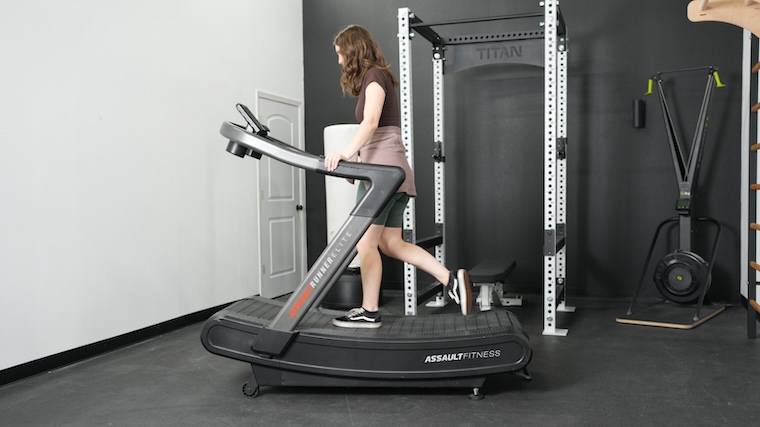
For example, if you’re a beginner, running on a manual treadmill may be too intense. They also likely aren’t fit if you want incline/decline training, to follow along with running classes, or to stream other content while you work out.
Size
“Check the overall length, width, and height of the machine in its assembled position and folded position, if applicable,” says Amanda Capritto, our expert reviewer. “And triple-measure your space to make sure it will fit!”
If you plan to move the treadmill on your own, take a look at the machine’s weight, too. “You’ll likely need something that weighs less than 200 pounds and has mounted transport wheels,” she adds, though “the best treadmills tend to weigh 250 pounds or more because they’re designed to withstand sprinting speeds without wobbling or shaking.”
Materials and Durability
You’ll want to have full faith in your treadmill parts when it comes to your manual treadmill. After all, you’re (literally) doing all the work, so the last thing you’d want is to have a component fail during training. We recommend looking for manual treadmills constructed with durable steel frames and minimal plastic overlays across the silhouette.
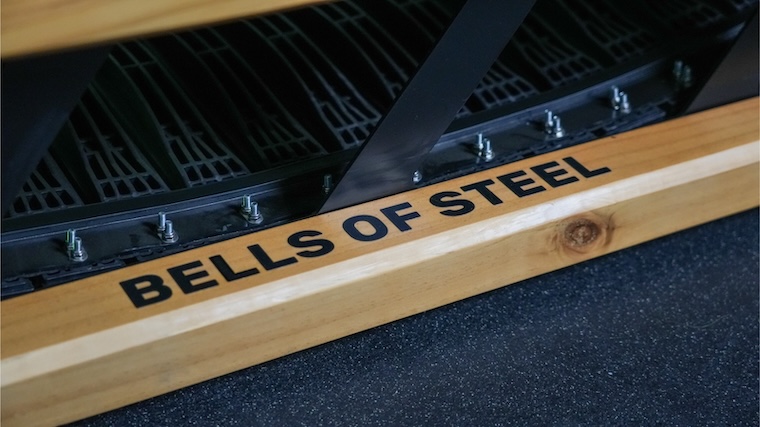
We also recommend opting for a thick, rubberized belt, if possible. The thicker rubber can withstand more revolutions over time, and also serve as an effective shock absorber when landing and pushing off with each stride.
Included Features
Manual treadmills rarely feature an abundance of accessories and extras, but you should keep a list of which items are must-haves in relation to your training habits. If you value built-in workout programs, be sure to seek a profile that has some training intervals baked into the on-unit console. We’ve also found some manual treadmills with integrated water bottle holders and storage bins, which can be helpful when trying to keep your essentials nearby during sessions.
Price
Your budget, frankly, is your business. Still, it pays to keep in mind that, when it comes to heavy workout machinery, you typically get what you pay for — and that seems to be even more true with manual treadmills.
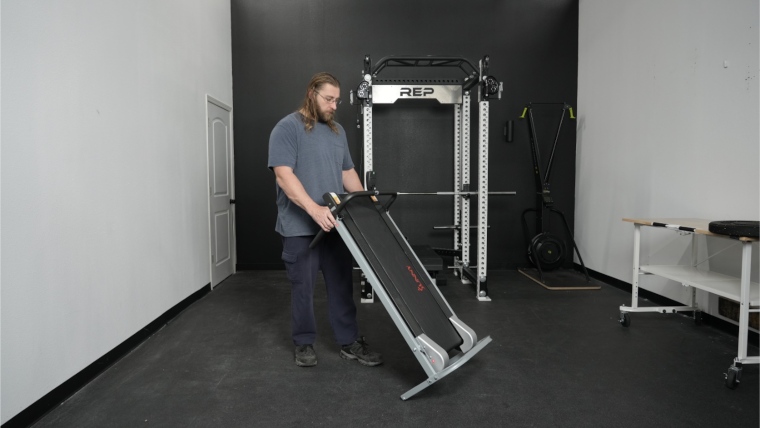
Investing in a pricer, heavy-duty machine could be a better option if you want to run or sprint at high speeds or if you want one to last for many years and lots of high-intensity workouts. If you’re just looking to get moving (and perhaps aren’t even sure if you’ll like a manual treadmill), trying a cheaper option first may be the way to go.
[Related: Running On a Treadmill vs. Running Outside]
How Much Do Manual Treadmills Cost?
The price spectrum for manual treadmills is wider than you’d think: Budget manual treadmills can go as low as about $200, while high-end options can creep up towards $10,000. Keep in mind, though, that you can often find machines on sale, especially if you shop during some of the best times to buy a treadmill. Below, we’ve compiled the price points of each manual treadmill featured in this round-up.
| Best Overall Manual Treadmill | Grit Fitness Tru Grit Runner | $2,495.99 |
| Best Budget Manual Treadmill | Bells of Steel Wooden Residential Treadmill | $1,999.99 |
| Best Manual Treadmill for Walking | Sunny Health & Fitness SF-T1407M Manual Walking Treadmill | $199.99 |
| Best Curved Manual Treadmill | TrueForm Runner | $6,895 |
| Best Manual Treadmill for Running | AssaultRunner Pro | $2,999 |
Manual Treadmills FAQs
What is the best manual treadmill?
In our opinion, the Tru Grit Runner from Grit Fitness is the best manual treadmill on the market in terms of quality and price. It offers solid construction, a smooth stride, and a spacious and shock-absorbing curved deck at under $3,000. If price is no object, however, we have to acknowledge the TrueForm Runner (nearly $7,000), which offers an unrivaled manual treadmill experience designed to improve your form and feel just like outdoor running.
Do manual treadmills have inclined options?
It depends, really. While some flat manual treadmills offer incline settings for the running belt, it can be difficult to find a curved silhouette with similar functionality, as changing the pitch of your running surface can interfere with the engineered arc of the belt. If you do prefer a treadmill with incline settings, we recommend seeking out a flat manual treadmill — or look at motorized options.
Why are manual treadmills curved?
Not all manual treadmills are curved, but many are because it makes it easier for you to keep the belt moving naturally with your stride. It also promotes better running form; running on a curved surface seems to shorten stride length, promote a more symmetrical gait, and reduce stride angle, which can help you run more efficiently and with reduced joint impact and injury risk. (4)
Do you burn more calories on a manual treadmill?
It appears so. Generally, the more intense the workout, the more oxygen you consume, and the more oxygen you consume, the more calories you burn. (8) Because running on a manual treadmill is harder and places more cardiometabolic demands on your body than running on a motorized treadmill, it means you’ll likely burn more calories. (5) In one small study done on young adults conducted at Eastern Washington University, the researchers found that running on a curved manual treadmill burned 44 percent more calories than on a motorized treadmill. (6)
References
- Edwards, R. B., Tofari, P. J., Cormack, S. J., & Whyte, D. G. (2017). Non-motorized Treadmill Running Is Associated with Higher Cardiometabolic Demands Compared with Overground and Motorized Treadmill Running. Frontiers in Physiology.
- Silder, A., Besier, T., & Delp, S. L. (2012). Predicting the metabolic cost of incline walking from muscle activity and walking mechanics. Journal of biomechanics.
- Orozco, E., Joslin, H., Blumenthal, K., & Rosario, M. (2022). Characteristics of Lower Extremity Muscle Activation in Response to Change in Inclination while Walking on a Treadmill. European Journal of Sport Sciences.
- Hatchett, A., Armstrong, K., Parr, B., Crews, M., & Tant, C. (2018). The Effect of a Curved Non-Motorized Treadmill on Running Gait Length, Imbalance and Stride Angle. Sports (Basel, Switzerland).
- Dabbs, N. C., Reid, M. J., Wimbish, J., Ng, J. (2021). The Effect of Motorized vs Non-Motorized Treadmills on Exercise Economy during Acute Sub-maximal Bouts in Collegiate Cross-Country Female Athletes. International Journal of Kinesiology & Sports Science.
- Robertson, N. (2014). Comparing Calorie Expenditure and Rating of Perceived Exertion between the Curve and a Motorized Treadmill. EWU Masters Thesis Collection.
- Schoenmakers, P. P. J. M., & Reed, K. E. (2018). The physiological and perceptual demands of running on a curved non-motorised treadmill: Implications for self-paced training. Journal of science and medicine in sport.
- Thompson, Dixie L. (2010). Fitness Focus Copy-and-Share: What is Oxygen Consumption?. ACSM’s Health & Fitness Journal.
